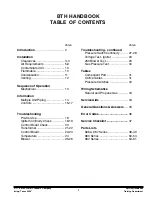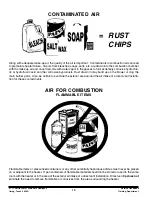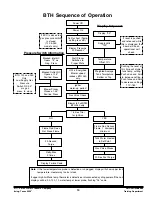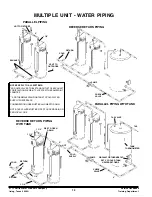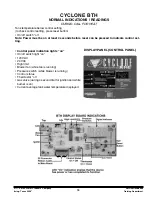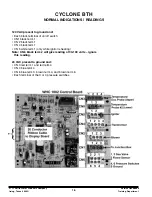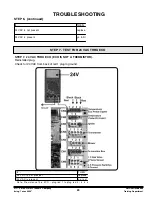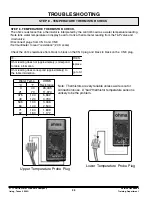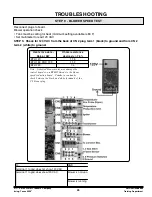
A. O. Smith Water Products Company
Service Handbook
Irving, Texas 2000
©
Training Department
11
The extra high thermal efficiency of the BTH will result in condensation in the flue passage. The following
answers common questions about this condensation.
Can I drain this condensation to the floor drain? The "Corrosion Resistance of Cast Iron Soil Pipe" by the
Ductile Metals Association (formally the Cast Iron Soil Pipe Institute) states that:
"Internal corrosion of cast iron soil pipe and fittings can be caused by strong acids or other reagents having
an acidity of pH 4.3 or less if allowed to contact cast iron pipe for an extended period of time without sufficient
dilution to raise the pH valve about 4.3. By avoiding low pH discharges, internal corrosion problems can be
limited or eliminated, assuring the owner many years of service."
WHAT ABOUT THE Ph VALUES OF CONDENSATE AND SODA POP?
The pH of the BTH condensate average 4.5 which is approximately 4 times less concentrated than the limit
of 4.3 recommended by the DMA. Any water flow in the drain rapidly dilutes the condensate even more. A can
of leading carbonated cola drink measured a pH of 2.5 which is 300 times more condentrated than the BTH
condensate.
WHAT DOES THE Ph SCALE MEAN? The PH value is a measure of acidity or alkalinity. A pH of 7 is neutral.
Numbers from 7 to 1 indicate increasing acidity and numbers from 7 to 14 indicate increasing alkalinity. The
pH scale is similar to the Richter scale used to measure earthquakes. Each number indicates a change of 10
times the concentration of the previous value. A pH-6 is 10 times more concentrated than a pH-7, a pH-5 is
(10x10) 100 times pH-7 and pH-4 is (10x10x10) 1,000 times pH-7, etc.
WHAT ABOUT CONDENSATE NEUTRALIZERS? Condensate neutralizers are usually not necessary. A
condensate neutralizer is easy to make by filling a short length of 2" or 3" PVC pipe with landscape marble
chips, capping it and installing it in series with the condensate drain of the equipment. Most commercial
neutralizers are off the market because of poor demand for the product. Condensation from the exhaust vent
piping and tank internal flue way must be allowed to drain. A "blocked flue" indication will often be your first
indication that condensate is not draining.
CONDENSATE
DRAIN HOSE
MUST DRAIN.
The average dewpoint of natural gas flue products is 127 °F. Propane flue
products is 119° F. With 70° F ambient air temperature and 180° F stored
water temperature, exhaust gas will be approximately 140° F. Recommended
safe water storage temperature is 120° F.
CONDENSATION
NOTE: This unit can be vented using only PVC (Class 160, ASTM D-
2241; Schedule 40, ASTM D-1785; or Cellular Core Schedule 40
DWV, ASTM F-891), Schedule 40 CPVC (ASTM F-411), or ABS
(ASTM D-2661) pipe. The fittings, other than the TERMINATIONS
should be equivalent to PVC-DWV fittings meeting ASTM D-2665
(Use CPVC fittings, ASTM F-438 for CPVC pipe and ABS fittings,
ASTM D-2661/3311 for ABS pipe. If CPVC or ABS pipe and fittings
are used, then the proper cement must be used for all joints, including
joining the pipe to the Termination Tee (PVC Material). PVC Materials
should use ASTM D-2564 Grade Cement; CPVC Materials should
use ASTM F-493 Grade Cement and; ABS Materials should use
ASTM D-2235 Grade Cement.
NOTE: for Water heaters in locations with high ambient temperatures
(above 100°F) and/or insufficient dilution air, it is recommended that
CPVC or ABS pipe and fittings (MUST USE SUPPLIED VENT
TERMINAL) be used.
Summary of Contents for BTH 120
Page 65: ......


